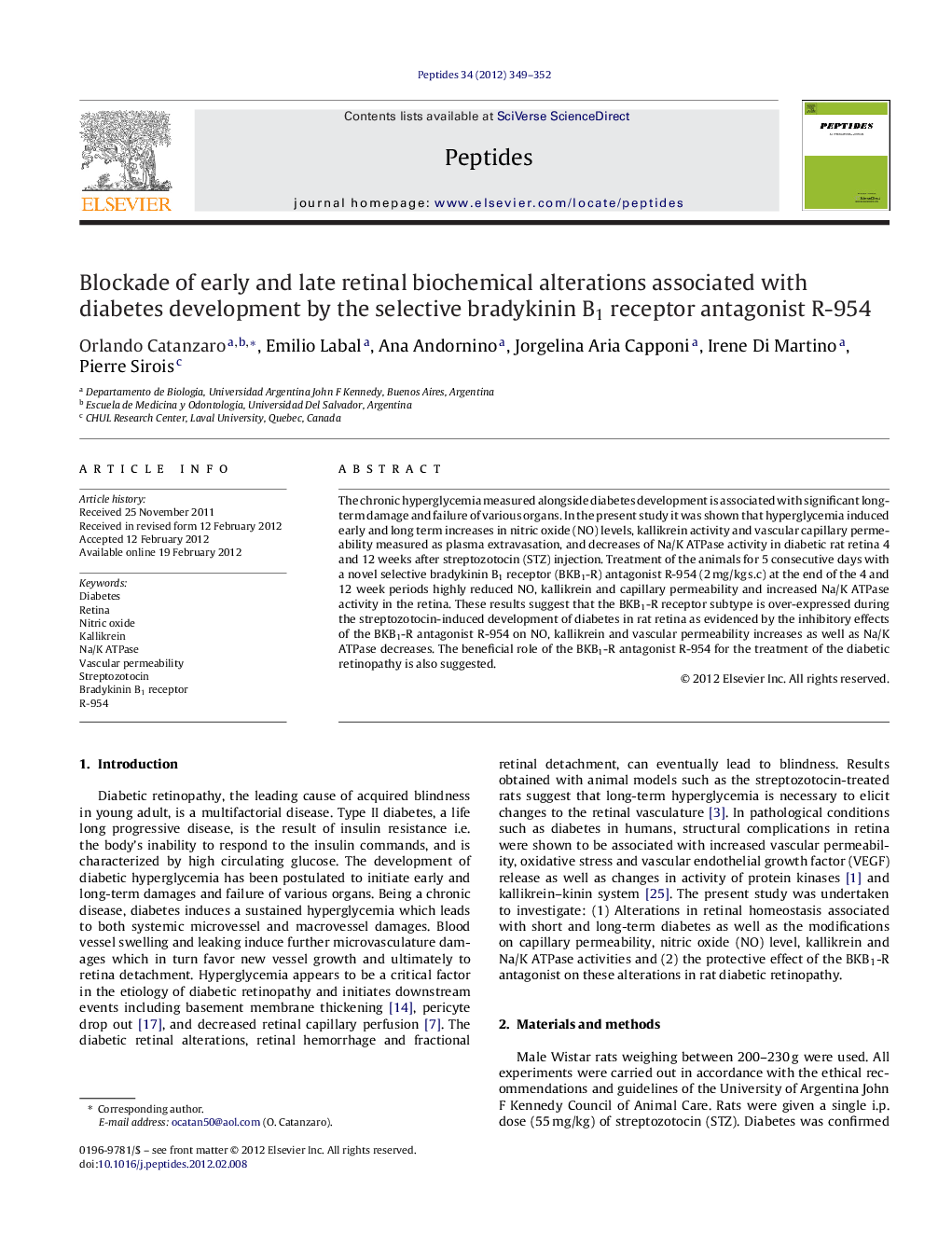| Article ID | Journal | Published Year | Pages | File Type |
|---|---|---|---|---|
| 2006477 | Peptides | 2012 | 4 Pages |
The chronic hyperglycemia measured alongside diabetes development is associated with significant long-term damage and failure of various organs. In the present study it was shown that hyperglycemia induced early and long term increases in nitric oxide (NO) levels, kallikrein activity and vascular capillary permeability measured as plasma extravasation, and decreases of Na/K ATPase activity in diabetic rat retina 4 and 12 weeks after streptozotocin (STZ) injection. Treatment of the animals for 5 consecutive days with a novel selective bradykinin B1 receptor (BKB1-R) antagonist R-954 (2 mg/kg s.c) at the end of the 4 and 12 week periods highly reduced NO, kallikrein and capillary permeability and increased Na/K ATPase activity in the retina. These results suggest that the BKB1-R receptor subtype is over-expressed during the streptozotocin-induced development of diabetes in rat retina as evidenced by the inhibitory effects of the BKB1-R antagonist R-954 on NO, kallikrein and vascular permeability increases as well as Na/K ATPase decreases. The beneficial role of the BKB1-R antagonist R-954 for the treatment of the diabetic retinopathy is also suggested.
► Chronic hyperglycemia in diabetes development associated with significant organ damage. ► Hyperglycemia increased in NO, kallikrein and vascular capillary permeability in diabetic rat retina 4 and 12 weeks after STZ. ► Hyperglycemia decreased Na/K ATPase activity in diabetic rat retina 4 and 12 weeks after STZ injection. ► Treatment for 5 days with BKB1-R antagonist R-954 highly reduced NO, kallikrein and capillary permeability and increased Na/K ATPase activity in the retina. ► BKB1-R receptor subtype over-expressed during STZ-induced diabetes development in rat retina.
